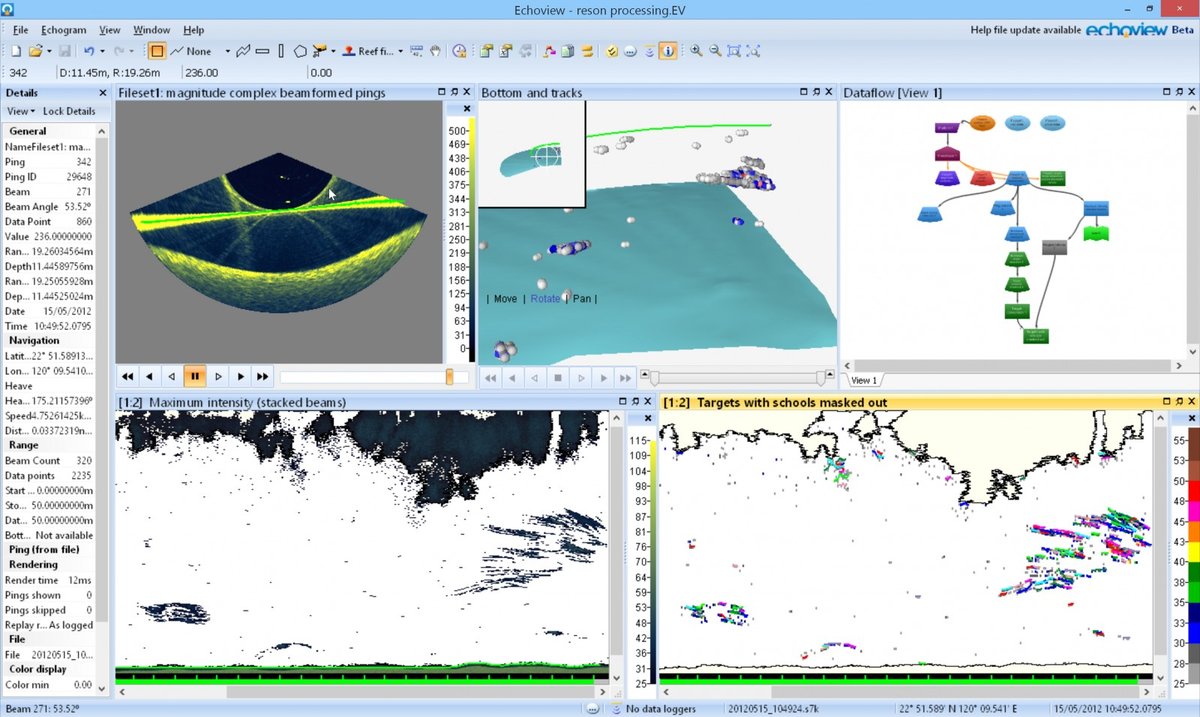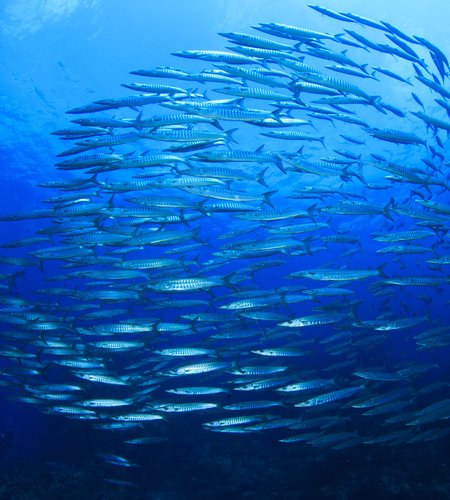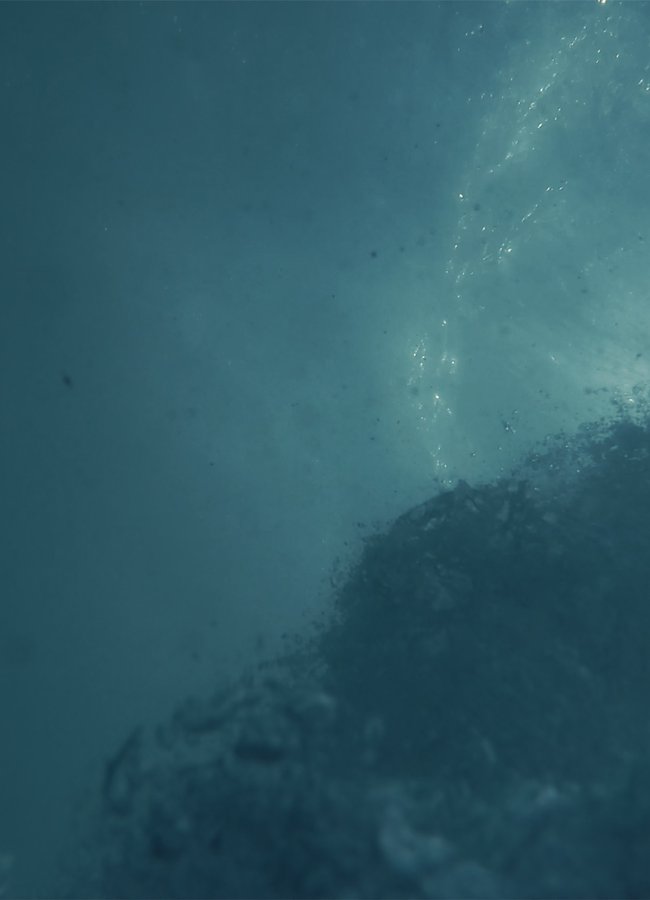Client
Dr. Shiahn-wern Shyue, National Sun Yat-sen University Taiwan
Background
Multibeam echosounders and sonars can sample larger volumes of water than single-beam echosounders. Traditionally they have been used to map ‘swathes’ of the seafloor – hence the term ‘swath mappers’ – but are increasingly being used by bioacousticians to detect and track targets in the water column such as fish (both individuals and schools).
Artificial reefs off Taiwan
At the National Sun Yat-sen University in Taiwan, Echoview user Dr. Shiahn-wern Shyue used data from a Reson SeaBat 7125 multibeam echosounder (MBES) to observe fish movements around Taiwan’s artificial reefs. Reefs can provide vital habitat for ecologically and commercially important fish species, and the Taiwan Fishery Bureau has invested considerable effort towards the preservation of fishery resources by deploying numerous artificial reefs around the island (Shyue and Yang 2002).

Multibeam data processing
The full range of Echoview’s capabilities for multibeam data processing can be leveraged to extract as much information as possible from MBES data such as this. Processing steps included:
- Visualizing the data via echograms (by-ping and ‘stacked beams’)
- Applying a bottom-detection algorithm for mapping the seafloor and artificial reefs
- Removing background signal
- Applying a target-detection algorithm to identify individual fish
- Applying aggregation-detection algorithms to identify schools of fish and zooplankton
- Applying a tracking algorithm to follow individual fish over time
- Calculating an extensive range of metrics (analysis variables) for the characterization of targets, tracks and aggregations, including:
- Number of fish
- Geographic location of fish
- Position of fish in the water column
- Fish swimming direction and speed
- Fish length
- Aggregation dimensions
- Bottom depth
- Using templates and scripts for working efficiently and objectively with large volumes of data
These procedures provide a quantitative description of the distribution, relative abundance and movement of fish around Taiwan’s artificial reefs, and thereby monitor the influence of these reefs on the ecosystem.
Acknowledgements
Echoview wishes to thank Dr. Shiahn-wern Shyue of the National Sun Yat-sen University, Kaohsiung, Taiwan for permission to present this work.
For more information
Echoview provides a wide range of tools for the visualization, processing and analysis of data from echosounders and sonars. To find out how you can use Echoview for your acoustic data, please contact the Echoview team.

